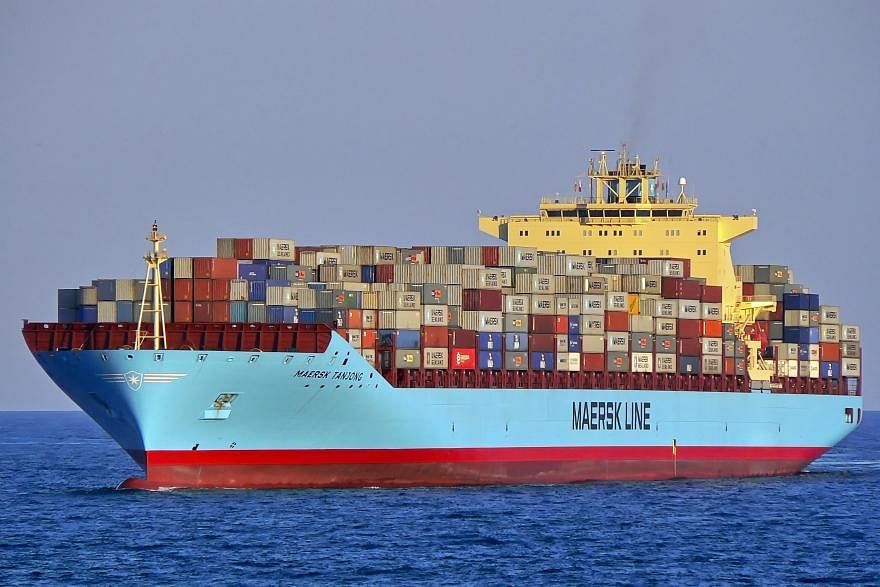WITH shipping company CMA CGM reportedly joining the switch to the Cape Route, almost all large container ships are now avoiding the Red Sea. They are not shouting it from the rooftops, but the container lines are not exactly distraught at the prospect of having to sail around Africa.
In the short term, freight rates have spiked. According to the Xeneta platform, average rates per forty-foot equivalent unit (FEU) for China-to-Europe routes a week or so ago were just over US$4,000. That was an increase of almost four times from November last year. Some rates had climbed even higher.
It is true of course that the lines’ costs have been increased by about eight days’ worth of fuel oil, but partially offset by not paying Suez Canal dues of perhaps around US$500,000 for a large container ship.
However, taking significantly more time for each voyage also affects the crucial demand/supply balance. For the whole history of containerisation, supply has continually outstripped demand. That is because more and larger vessels are always being built.
So, quite apart from a spike in freight rates caused by the lines passing on the additional costs of longer voyages, the market has tilted in the lines’ favour. They will probably keep that advantage for a while.
That means in the short and, possibly, medium term, the lines will be in a comparatively good position.
That won’t last and become the long-term norm, due to at least three factors. The most obvious one is that by some means or another, safe navigation could be restored in the Red Sea. That could happen overnight if a political deal were to be reached.
Once the Suez route is open again, there will be an instant clamour from shippers for rate reductions.
Even if the Red Sea remains effectively closed, the demand/supply balance will gradually change as the lines bring more tonnage in. It would be a major break with the past if the lines managed to dispose of enough older tonnage to offset the additional capacity.
Then there is another factor looming, although its impact is still unclear. The European Union’s block exemption for liner shipping consortia – or alliances – to parts of its competition law is ending. Comments from the lines seem to downplay the significance of this, although they certainly fought tooth and nail to keep it. A gleeful response from the shippers’ side suggests they think it will have a significant impact.
Whatever the future impact of that regulatory change, in the long run, there is every reason to expect the long-haul container sector to revert to its accustomed low returns, at best, on investments that have characterised the industry since the demise of the liner conference system.
I have referred previously in this column to the decision of the then-chairman of the P&O group when it was a major force in the shipping industry. He realised the likelihood that liner shipping would see poor earnings for the foreseeable future. He gave the sector one more chance with the creation of P&O Nedlloyd but said that if it did not achieve a 10 per cent return on investment, then it would be sold. It did not and it was sold to Maersk.
Coincidentally, Maersk has just published its financial results for 2023. It noted: “While volumes were up across most products and strong cost control helped improve results, rates continued to erode, particularly in ocean transport. Revenue for 2023 was US$51.1 billion, with an Ebit (earnings before interest and taxes) margin of 7.7 per cent impacted by declining freight rates.”
Those results of course mainly reflect business as usual before the Red Sea crisis. Maersk CEO Vincent Clerc remarked: “2023 was a transitional year following the extraordinary market boom caused by the pandemic. We secured solid financial results despite significantly changed circumstances, and we are well-positioned to manage the expected headwinds in 2024.”
He added: “By taking early and decisive measures to enforce strict cost management, we adapted to the new reality. We need to see further progress in the logistics business to align with our targets, as we continue to push our transformation forward and enhance our competitiveness.”
What does that mean? He is very frank about that, saying: “The current market remains one of robust volumes, but while the Red Sea crisis has caused immediate capacity constraints and a temporary increase in rates, eventually the oversupply in shipping capacity will lead to price pressure and impact our results.”
“The ongoing disruptions and market volatility emphasise the need for supply chain resilience, further confirming that Maersk’s path toward integrated logistics is the right choice for our customers to effectively manage these challenges,” he added.
In other words, the group’s profits are going to come out of each end of the supply chain, from logistics and port terminals, while ocean container shipping will always see poor returns.
An HSBC Research report on Maersk’s fourth-quarter results and guidance said that they “reveal weakness at the company level beyond industry downcycle, in our view”.
However it added: “We still think that the Red Sea disruptions should lift freight rates enough to avoid losses in 2024 even for Maersk.”
The report notes that Maersk is losing its competitive edge compared to its peers. Its Ocean segment Q4 2023 Ebit margin was minus 13 per cent, down 12.5 percentage points quarter on quarter. The report notes that this was much worse than Hapag-Lloyd’s Ebit margin of minus 7 per cent and Ocean Network Express’ Ebit margin of minus 7.4 per cent.
While the report sought to highlight that Maersk was faring worse than its competitors, the more important takeaway is that all the liner shipping companies were performing terribly by the end of last year.
For now, there is a temporary reprieve. However, the fundamental issues blighting container shipping remain and are unlikely to be solved, except possibly by even more consolidation.


Leave a Reply